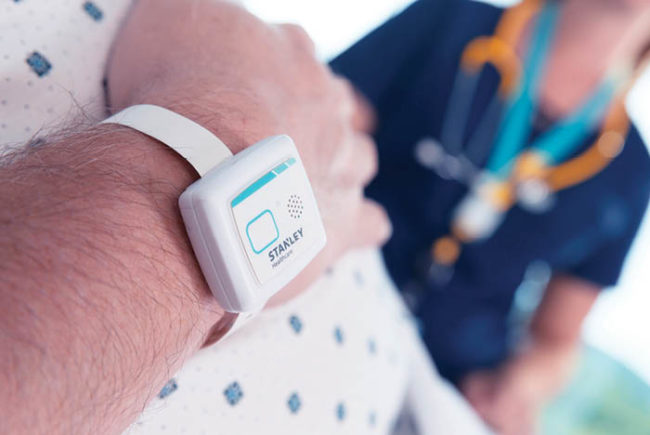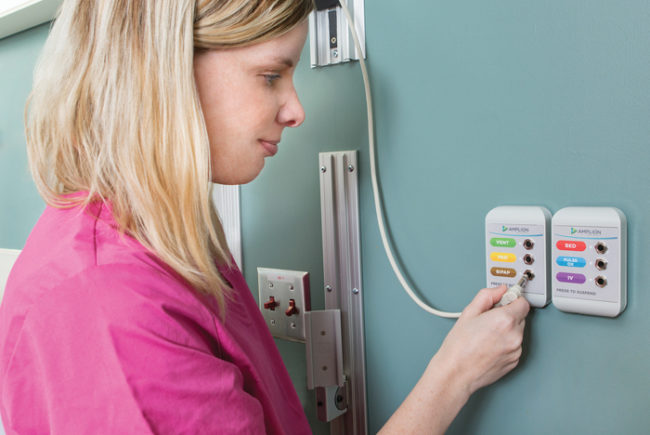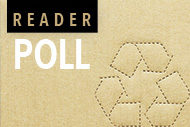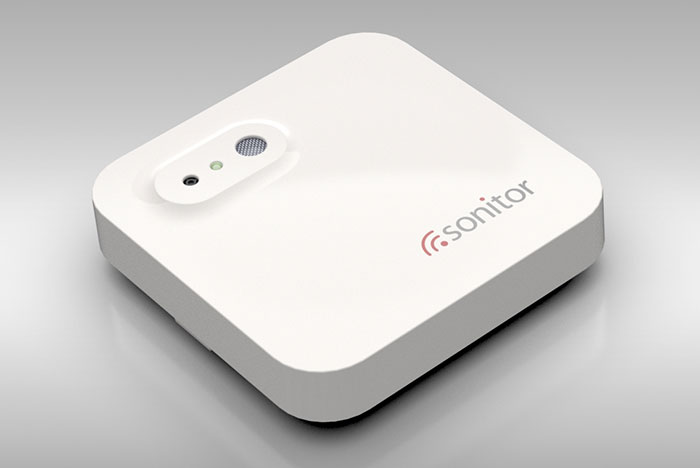
Real-time locating systems (RTLSs) continue to evolve as they help hospitals to track key assets and improve workflow and safety. Recent developments include cloud-based solutions and Bluetooth low energy (BLE). Such advances are welcome within complex health care environments where people and equipment are in constant motion.
Sources estimate that RTLS applications are deployed in 20 percent or fewer hospitals. “However, industry experts also believe that health care organizations are using time and resources to focus on immediate needs such as meaningful use and electronic health record integrations,” says Stephanie Bertschy, senior marketing manager, Versus Technology, Traverse City, Mich. “Once those hurdles are cleared, RTLS adoption will likely increase.”
The most prevalent RTLS applications have been for asset/equipment tracking and optimization, as well as temperature monitoring, according to Shane Waslaski, president and CEO, Intelligent InSites, Fargo, N.D. His recent discussions with health care leaders have centered on leveraging the functionality and value of these systems for patient and staff workflow. “We are experiencing our greatest growth in products that leverage real-time patient and staff location data to reduce cycle time, increase patient access and maximize facility space utilization.
“Many health systems use our InSites for Clinics solution to enable patient self-rooming and leverage workflow-management capabilities,” he continues. “Self-rooming allows the patient, at registration, to be assigned immediately to an exam room. Instead of the nurse having to retrieve them from a waiting room, patients proceed to their assigned exam rooms and InSites’ RTLS software instantly notifies the care team that the patient has arrived and is ready to be seen.”
Technological advances
A number of changes are taking place in RTLS technology. Cloud-based solutions are emerging that eliminate the need for hospitals to maintain server infrastructure and manage software updates. This appeals to many hospitals because it eliminates or reduces up-front capital costs and allows them to outsource system management to the vendor, according to Steve Elder, director of communications, Stanley Healthcare, Waltham, Mass.
“Another key development is BLE, which offers advantages for indoor locating, such as smaller and cheaper tags,” Elder says. “At this stage, the most practical application of BLE is wayfinding; as with Wi-Fi, you need a network of readers to do true RTLS, and most hospitals don’t have that yet. As network infrastructure vendors add BLE to their Wi-Fi access points, however, more BLE solutions for RTLS will appear.”
Analytics to transform RTLS data into actionable insight continues to gain traction because RTLS systems provide unique data points — time and location. “Combined with data from other systems such as electronic health records, these data enable hospitals to see patterns that directly impact care delivery — like the connection between provider contact time and outcomes, or nurse contact time as it relates to patient satisfaction scores,” Elder adds.
Single technologies cannot address the complexities of health care facilities, according to Ari Naim, president and CEO, CenTrak, Newtown, Pa. So, the ability to leverage multiple technologies to deliver the optimal solution for a facility’s individual needs is key — from technologies that provide basic asset tracking and zonal-level locating, to enabling clinical-grade locating for automating workflow — all while utilizing the same platform and infrastructure.
“These technologies include BLE, Wi-Fi, low-frequency, passive radio-frequency identification, active ultrahigh frequency, second-generation infrared and advanced ultrasound,” Naim says. “They enable health care facilities to scale their RTLS as their organizations grow and new applications become a priority.”
For years, hospitals have attempted to utilize existing Wi-Fi as the backbone for RTLS solutions, but alternative solutions recently have been introduced. For example, MGM Solutions Inc., Wenonah, N.J., has developed a blend of three RTLS technologies on a single infrastructure that provides accuracy and reliability. “The system relies on a patented triangulation method that integrates radio frequency, diffused infrared and low-frequency radio to track patients, staff and equipment in real time,” says CEO Michael Maurer.
Data collection
Data collection from RTLS systems is becoming more important. Having the basic information as to where things are located improves efficiency and staff satisfaction. However, until an organization can collect and analyze all of the different interactions among patients, staff and equipment throughout a facility, it cannot really begin to gather actionable business intelligence to drive true process improvements.
Data collection is important not only to make intelligent, real-time decisions about various events, such as location changes, but for historical purposes as well, according to Matthew Cannell, senior program manager, service technology, GE Healthcare, Milwaukee. “For example, it would be helpful for a user to see specific information about a device, such as where the device has been in the facility during a given time frame, and the shortest path to reach the device in real time, so the user can either use the device or remove it from service. Fusing together real-time and historical information, and leveraging the power of BLE and Wi-Fi, are powerful for multiple-use cases.”
Different locating technologies provide different levels of data, all of which are based on the precision of hardware. This should be an important consideration when evaluating RTLS solutions to support objectives. Among other factors, facilities managers need to determine what kind of granularity is needed to support operational improvements, according to Bertschy.
“For example, typical Wi-Fi zone-level locating is not granular enough to support process-efficiency efforts in PAR-level asset management or patient-flow applications. Data capture also can be skewed by signal frequency or latency, making it impossible to assess accurate movement paths of people or equipment,” Bertschy explains.
RTLS installation planning is another key factor that facilities managers need to consider. At kickoff, health care organizations must establish an RTLS project team to drive objectives and foster cross-department communication, says Waslaski. The team should include individuals from information technology, facilities management, clinical engineering and nursing. “Whether applications include tracking mobile equipment or managing patient flow, the nursing team is the heartbeat of any organization’s workflow and offers vital insight,” Waslaski says.
Proper planning is crucial to RTLS installation, according to Dave Wiedman, chief commercial officer, Vizzia Technologies, Atlanta. Facilities managers need to make sure there is proper RTLS location coverage and that resources are dedicated to ongoing system maintenance, whether they are their own resources or a supplier’s. “Also, they need to ensure that their organization is ready to change how it operates to obtain the value they envision from their RTLS investment. That means owners within each department must be committed to process improvement.”
RTLS solutions
RTLS solutions for the health care field encompass many of these trends. Among them, Stanley Healthcare recently launched an Internet of Things platform that is cloud-based, with a range of sensors for temperature, humidity, differential pressure and any system or equipment that generates a contact closure. “This solution brings real-time monitoring within reach of a wider range of organizations — including critical care hospitals, outpatient service providers, physician groups, laboratories and pharmacies — that traditionally could not support an RTLS solution,” Elder says.
Sonitor Technologies Inc., Stamford, Conn., recently introduced the Forkbeard platform, based on a fundamentally new approach to ultrasound decoding that delivers accurate distance measurements and finds powerful Doppler effects when an object is in motion. The result is a scalable, accurate, indoor positioning platform that delivers GPS-like performance indoors. “Forkbeard is compatible with the billions of iOS, Android and Windows smart devices on the market today. By leveraging the capacity of a smartphone’s microphone and power processor, we are able to transform a smartphone into an accurate indoor positioning device or tag with no modifications or accessories,” says Anne Bugge, president and CEO.
CenTrak has introduced a 31-day patient tag that enables scalable patient tracking across acute care and outpatient facilities. The waterproof tag fits on standard, hospital-issued patient ID wristbands. “Featuring a modular design, the tag provides an economical solution to a variety of patient-management challenges,” Naim says.
GE Healthcare has introduced Encompass, which is designed to help hospitals manage mobile-asset inventory and reduce total cost of ownership. It is built on open standards and commercial BLE wireless technology that leverages a hospital’s existing Wi-Fi network. This approach eliminates the classic objections to proprietary, hard-wired locating systems. For example, Encompass can be installed in a few days without opening ceilings or drilling into walls to run cable.
“The capital and installation cost is 60 percent lower than for cabled RTLS, and the applications can be provided as a subscription service,” explains Jatinder Sihra, global marketing director of digital solutions, GE Healthcare. “The system can be easily reconfigured if hospital layouts are redesigned or repurposed. As a cloud-based application suite, the location system is accessible to any authorized staff member and from any computer or mobile device with internet access.”
MGM Solutions is seeing great interest in its patient- and staff-safety applications. To meet that request, the company offers SecurTrak, which interacts with building systems such as doors, elevators and closed-circuit TV cameras, thus adding an additional layer of safety for patients. “The staff badges can deactivate the wandering patient badge, but also can issue an alert in the case of a duress situation, which is what would alert first responders,” Maurer explains.
Versus Technology has introduced the Clearview Mini, which features location accuracy in a lightweight format. “It is four wearables in one, with two options for the wrist and two for the lapel using standard attachments or with reusable accessories, so one badge provides multiple options for patients and staff,” Bertschy says.
The Vizzion software platform from Vizzia Technologies is designed for common RTLS applications such as asset management, environmental monitoring, patient flow, transport management and bulk-drug logistics. The company recently added a Stroke-Stat module, which helps stroke teams share critical information about each patient from the moment he or she enters the stroke-patient workflow through treatment and recovery. “Each critical step is measured and we work with the stroke team to improve their arrival to needle time,” Wiedman says.
Continued advances
Looking ahead, Wiedman sees continued advances in RTLS hardware technology — smaller, faster, longer battery life, more integration with existing systems, and further advances into mobile platforms for such communications as BLE and near-field communication. He also sees a steady reduction in hardware costs as technologies advance.
Neal Lorenzi is a freelance writer based in Mundelein, Ill.
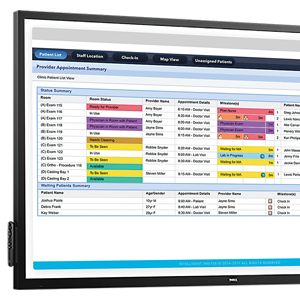
Inside knowledge
The InSites for Clinics patient flow solution provides visibility into the flow of patients and staff, and insight into bottlenecks that cause delays in care. Intelligent Insites
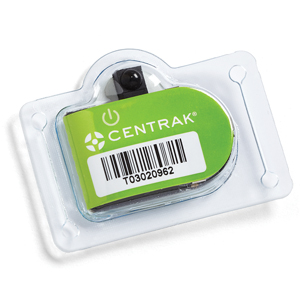
Monthly basis
These 31-day patient tags can be color-coded by month and enable patient tracking across acute care and outpatient facilities. Centrak Inc.
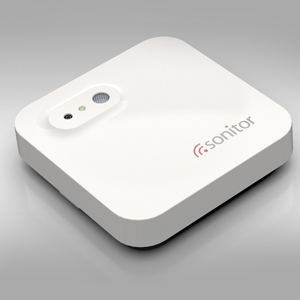
Pinpoint accuracy
UltraBeacon is a compact beacon that combines the convenience of Bluetooth low energy with the accuracy of ultrasound for indoor positioning. Sonitor Technologies Inc.
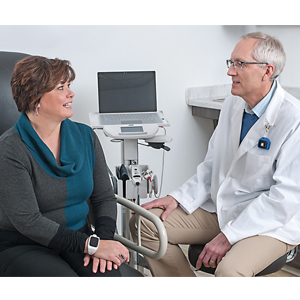
Easy to wear
Clearview Mini provides multiple wearing options for patients and staff — including on the wrist or the lapel. Versus Technology
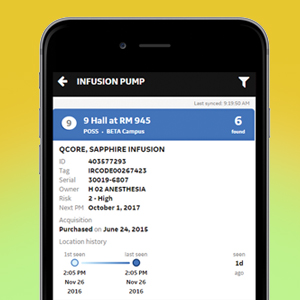
Seek and find
The FindIt mobile application enables users of Encompass to locate mobile assets in a timely fashion. GE Healthcare
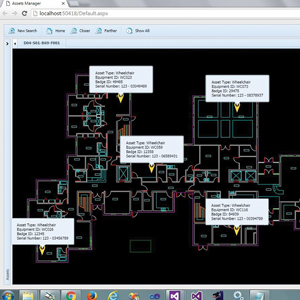
Safety first
SecurTrak interacts with doors, elevators and closed-circuit TV cameras, adding an additional layer of safety. MGM Solutions Inc.
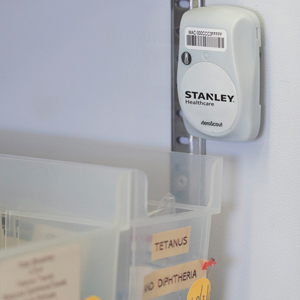
Perfect temp
AeroScout temperature tags are used in areas that require strict temperature ranges such as clinical refrigerators. Stanley Healthcare
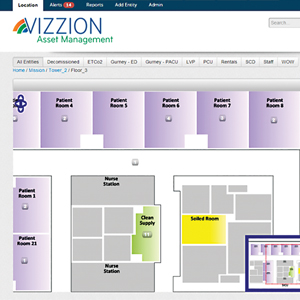
Right on track
Vizzion has tracked millions of real-time clinical and asset management events for systems, hospitals and clinics nationwide. Vizzia Technologies



